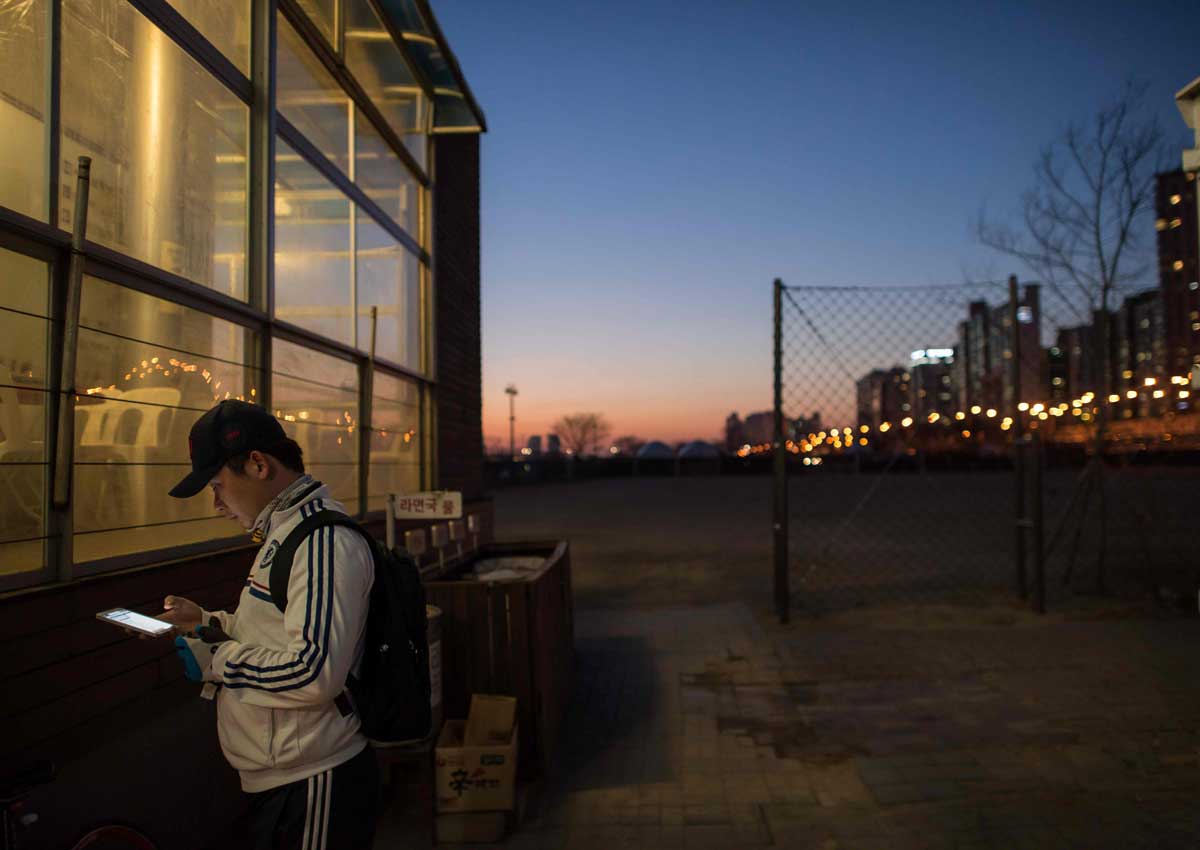Office worker Kim Byung Jin, 35, has noticed something new on the pavement near Seoul’s City Hall on his way to the office.
It is a crossed-out circular sign showing a walking man looking at a smartphone in his hand and the words: Stay safe when walking.
The message is part of a new campaign by the Seoul city government and the National Police Agency to encourage road safety in a country with a smartphone penetration rate of more than 80 per cent.
Mr Kim, who first spotted the sign last week, said it was a good idea, but it was not enough to convince him to put his phone down.
“Walking around looking at the phone has become a habit for so many people. We are free to do so and no one seems to realise the danger in doing so,” he told The Straits Times.
This is an attitude that the Seoul city government hopes to change, given a sharp rise in traffic accidents involving smartphone users.
The figures speak for themselves. Such accidents have more than doubled over five years, from 437 in 2009 to 1,111 in 2014, in tandem with the increased use of smartphones from 2 per cent of the population in 2009 to 83 per cent last year, according to industry data.
In hyper-wired South Korea, smartphones not only connect people via social media, but they are also a main source of news and entertainment for people on the go.
Smartphone zombies – or pedestrians whose eyes are glued to their touch screens – are a common sight on the streets of Seoul.
Many also have earphones on, further putting themselves and other road users at risk.
A study by the Korea Transportation Safety Authority showed that pedestrians would normally notice sounds from cars or other sources from a distance of 14.4m, but the figure is halved for smartphone zombies, reducing their ability to react to potential dangers.
Schools have banned mobile phones since 2012 in a bid to prevent addiction and traffic accidents, and to encourage students to focus on their studies without the distraction.
Nearly two weeks ago, following the footsteps of other major cities around the world that have acted against smartphone zombies, Seoul started putting up 300 no-smartphone-when-walking signs around five densely populated, accident-prone areas.
These include areas around City Hall, the Gangnam and Jamsil subway stations, Yonsei University and Hongik University.
Out of these, 50 are triangular road safety signs attached to lamp posts or traffic light posts, which show a man looking at his smartphone almost colliding with a car.
They also carry the message: Beware of smartphone while walking.
The other 250 are circular signs plastered on pavements.
Mr Seo Seong Man, the official in charge of the scheme, said this is a pilot project to remind citizens about the dangers of using their smartphones when walking.
If it leads to a decrease in the number of accidents, the authorities will consider designating them as official road safety signs, Mr Seo added.
The Korean media, however, has questioned the effectiveness of the signs, citing observations of people who blatantly ignore them or fail to notice their presence.
This reporter counted, within the space of two hours, at least 50 pedestrians who were using their smartphones, oblivious to the new signs, at a major pedestrian crossing near City Hall last Friday.
Singaporean student Wun Cheng Mun, 23, who has lived in Seoul for the past two years, thinks it will take more than a few signs to change people’s behaviour.
Noting that she has seen many people dashing across the road without checking for vehicles before looking up from their phones to realise suddenly that the traffic light is in their favour, she said: “If the people crossing the road are not paying attention to cars, why would they notice a sign?”
The authorities should instead “try to increase awareness among children and teach them how to use the roads safely”, she added.
Mr Kim said imposing some form of punishment, like a fine, might work better, but added that it might be hard to enforce.
“The desire for change must come from within but, right now, no one really thinks texting while walking could be dangerous,” he said.
changmc@sph.com.sg

This article was first published on June 27, 2016.
Get a copy of The Straits Times or go to straitstimes.com for more stories.





